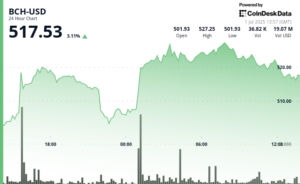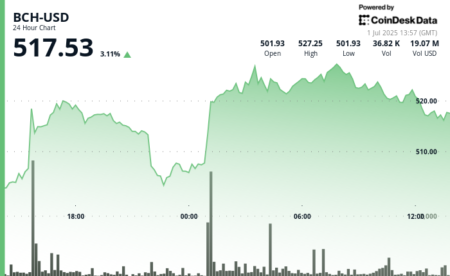Bitcoin Hashrate and Mining Profitability Trends: June Overview
In June, the Bitcoin network witnessed a notable decline in its average hashrate, dropping by approximately 3%. According to a research report from Wall Street bank JPMorgan, this dip in hashrate—a measure of the total computational power deployed on the blockchain—indicates a reduction in competition among miners and a potential increase in mining difficulty. The hashrate is quantified in exahashes per second (EH/s), and the report suggests that seasonal weather patterns in the U.S. may have contributed to the decreased mining activity. Analysts from JPMorgan, Reginald Smith and Charles Pearce, noted that key mining companies like Cipher, IREN, and Riot operate over 80 EH/s in Texas, where weather conditions impact operations significantly.
Despite the drop in hashrate, the profitability of Bitcoin mining has exhibited a positive trend. The report indicates that miners earned an average of $55,300 per EH/s in daily block reward revenue in June, marking a 7% rise from April. This increase in revenue is correlated with a 13% month-on-month growth in daily block reward gross profit, reaching levels not seen since January. The surge in profitability potentially offsets some of the challenges posed by the falling hashrate, indicating resilience within the mining sector.
Furthermore, the total market capitalization of 13 U.S.-listed Bitcoin miners that JPMorgan tracks rose by 23%, equivalent to around $5.3 billion. This growth highlights the increasing investor interest and confidence in the Bitcoin mining industry, despite operational challenges that may arise from fluctuating hashrates. Notably, firms engaged in high-performance computing (HPC) outperformed traditional miners, partly due to speculation surrounding a potential merger between Core Scientific and CoreWeave, which likely stirred investor optimism.
Within this landscape, IREN stood out, posting a remarkable gain of 67% for the month, while Bitfarms encountered the steepest decline among the tracked companies, with a 19% drop. This divergence in performance underscores the competitive nature of the Bitcoin mining sector, influenced by many factors including market sentiment, operational efficiency, and strategic maneuvers like mergers and acquisitions.
The implications of these trends are multi-faceted. A decrease in Bitcoin’s hashrate signals potential market adjustments—miner engagement may shift as profitability fluctuates. Additionally, as mining difficulty adjusts in response to these changes, the long-term implications for Bitcoin’s transaction processing could evolve, leading to debates within the blockchain community regarding miner incentives and overall network health.
Finally, the current state of the Bitcoin mining industry exemplifies the broader volatility inherent in cryptocurrency markets. Stakeholders must remain vigilant, adapting strategies to optimize profitability and operational efficiency in an environment characterized by rapid changes in both technological capabilities and external economic factors. As the industry continues to evolve, continuous monitoring of hashrate trends, profitability metrics, and competitive dynamics will be crucial for informed decision-making and sustained growth.

















